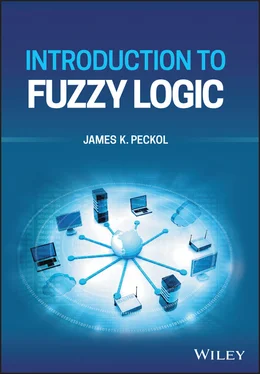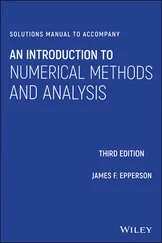123 106
124 107
125 108
126 109
127 110
128 111
129 112
130 113
131 114
132 115
133 116
134 117
135 118
136 119
137 120
138 121
139 122
140 123
141 124
142 125
143 126
144 127
145 128
146 129
147 130
148 131
149 132
150 133
151 134
152 135
153 136
154 137
155 138
156 139
157 140
158 141
159 142
160 143
161 144
162 145
163 146
164 147
165 148
166 149
167 150
168 151
169 152
170 153
171 154
172 155
173 156
174 157
175 158
176 159
177 160
178 161
179 162
180 163
181 164
182 165
183 166
184 167
185 168
186 169
187 170
188 171
189 172
190 173
191 174
192 175
193 176
194 177
195 178
196 179
197 180
198 181
199 183
200 184
201 185
202 186
203 187
204 188
205 189
206 190
207 191
208 192
209 193
210 194
211 195
212 196
213 197
214 198
215 199
216 200
217 201
218 202
219 203
220 204
221 205
222 206
223 207
224 208
225 209
226 210
227 211
228 212
229 213
230 214
231 215
232 216
233 217
234 218
235 219
236 220
237 221
238 222
239 223
240 224
241 225
242 226
243 227
244 228
245 229
246 230
247 231
248 232
249 233
250 234
251 235
252 236
253 237
254 238
255 239
256 240
257 241
258 242
259 243
260 244
261 245
262 246
263 247
264 248
265 249
266 250
267 251
268 252
269 253
270 254
271 255
272 257
273 258
274 259
275 260
276 261
277 263
278 264
279 265
280 266
281 267
282 268
283 269
284 270
285 271
286 272
287 273
Introduction to Fuzzy Logic
James K. Peckol
Principal Lecturer Emeritus, Department of Electrical and Computer Engineering, University of Washington, Seattle, WA, USA
and
President, Oxford Consulting, Ltd, Seattle, WA, USA

This edition first published 2021
© 2021 John Wiley & Sons Ltd
All rights reserved. No part of this publication may be reproduced, stored in a retrieval system, or transmitted, in any form or by any means, electronic, mechanical, photocopying, recording or otherwise, except as permitted by law. Advice on how to obtain permission to reuse material from this title is available at http://www.wiley.com/go/permissions.
The right of James K. Peckol to be identified as the authors of this work has been asserted in accordance with law.
Registered Office(s) John Wiley & Sons, Inc., 111 River Street, Hoboken, NJ 07030, USA John Wiley & Sons Ltd, The Atrium, Southern Gate, Chichester, West Sussex, PO19 8SQ, UK
Editorial Office The Atrium, Southern Gate, Chichester, West Sussex, PO19 8SQ, UK
For details of our global editorial offices, customer services, and more information about Wiley products visit us at www.wiley.com.
Wiley also publishes its books in a variety of electronic formats and by print‐on‐demand. Some content that appears in standard print versions of this book may not be available in other formats.
Limit of Liability/Disclaimer of Warranty In view of ongoing research, equipment modifications, changes in governmental regulations, and the constant flow of information relating to the use of experimental reagents, equipment, and devices, the reader is urged to review and evaluate the information provided in the package insert or instructions for each chemical, piece of equipment, reagent, or device for, among other things, any changes in the instructions or indication of usage and for added warnings and precautions. While the publisher and authors have used their best efforts in preparing this work, they make no representations or warranties with respect to the accuracy or completeness of the contents of this work and specifically disclaim all warranties, including without limitation any implied warranties of merchantability or fitness for a particular purpose. No warranty may be created or extended by sales representatives, written sales materials or promotional statements for this work. The fact that an organization, website, or product is referred to in this work as a citation and/or potential source of further information does not mean that the publisher and authors endorse the information or services the organization, website, or product may provide or recommendations it may make. This work is sold with the understanding that the publisher is not engaged in rendering professional services. The advice and strategies contained herein may not be suitable for your situation. You should consult with a specialist where appropriate. Further, readers should be aware that websites listed in this work may have changed or disappeared between when this work was written and when it is read. Neither the publisher nor authors shall be liable for any loss of profit or any other commercial damages, including but not limited to special, incidental, consequential, or other damages.
Library of Congress Cataloging‐in‐Publication Data
Name: Peckol, James K., author. | John Wiley & Sons, publisher.
Title: Introduction to fuzzy logic / James K. Peckol.
Description: Hoboken, NJ : Wiley, 2021. | Includes bibliographical references and index.
Identifiers: LCCN 2021011123 (print) | LCCN 2021011124 (ebook) | ISBN 9781119772613 (cloth) | ISBN 9781119772620 (adobe pdf) | ISBN 9781119772637 (epub)
Subjects: LCSH: Fuzzy logic. | Fuzzy sets. | Logic, Symbolic and mathematical.
Classification: LCC QA9.64 .P43 2021 (print) | LCC QA9.64 (ebook) | DDC 511.3/13–dc23
LC record available at https://lccn.loc.gov/2021011123LC ebook record available at https://lccn.loc.gov/2021011124
Cover Design: Wiley
Cover Image: © Rasi Bhadramani/iStock/Getty Images
To my family: Near and Extended, Close and Distant,Present and Departed, So Similar,So Different, So Known, So Surprising …especially to our youngest brother Karl,taken from us out of season during the last voyageof the Edmund Fitzgerald.
Preface
Starting to Think Fuzzy and Beyond
Let's begin with these questions: “Exactly what is fuzzy logic?” “Why is the logic called fuzzy?” “Who might use fuzzy logic?” These are very good questions. People may have heard something about fuzzy logic and other kinds of logic but may not be quite sure what these terms mean or quite understand the applications.
Does fuzzy logic mean that someone's comment in a discussion is very confused? Let's try to answer that question and several of the other more common ones over the course of this text by starting with some simple fuzzy examples.
Our daily language is often routinely fuzzy; yet most of the time we easily understand it. Let's start by looking at some familiar expressions from our everyday exchanges.
Where did you park the car?
I parked up close to the front door of the building.
Please put the box in the trunk of the car.
Читать дальше













